Common mode noise filter NFG0QHB242HS2
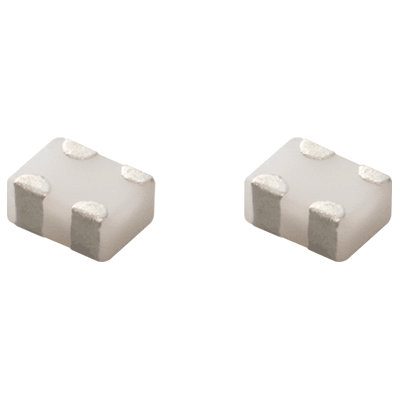
Noise suppression technologies/case study introduction (Consumer)
INDEX
Noise picked up by an antenna was evaluated by using an electronic device with USB 3.2 support and equipped with a Wi-Fi antenna.
The antenna used for the evaluation was the one incorporated into the device.
The extent that the noise radiated from the evaluation board wirings was picked up by the antenna was investigated during transmission through USB 3.2.
Furthermore, the effects of this measure were compared with those derived from CMCC.
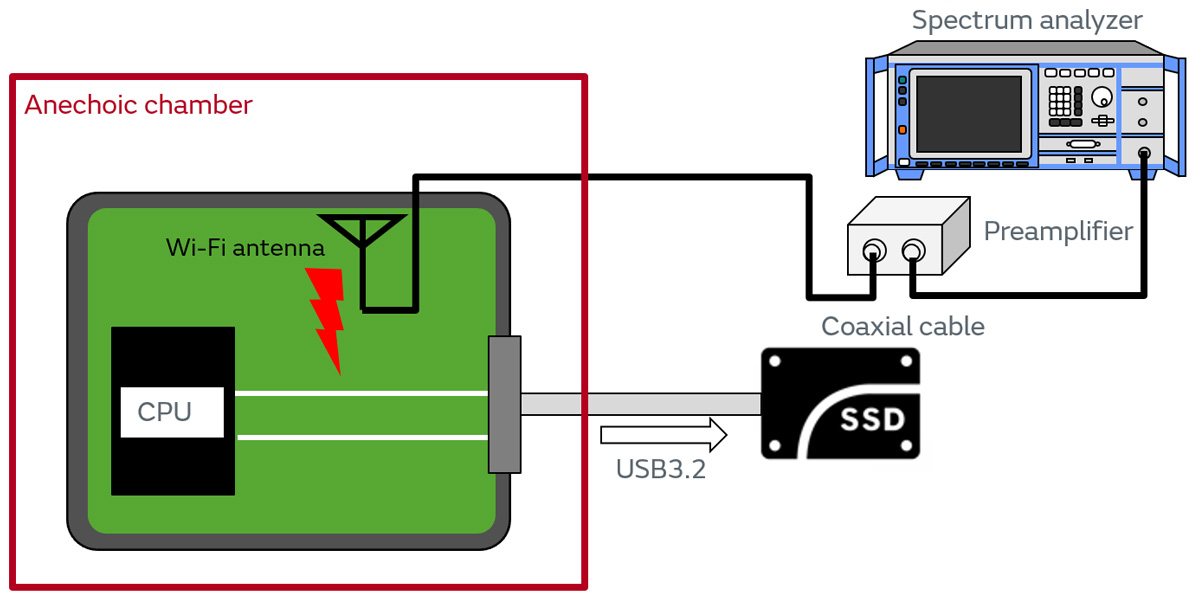
Green vs. red (standard)
When the CMCC was placed away from the noise source, the noise was not improved.
Blue vs. red (standard)
When the CMCC was placed close to the noise source, the noise was improved by approximately 5 dB.
The result indicated that the noise differed by 5 dB even when the actual device was used, depending on the position the CMCC was installed.
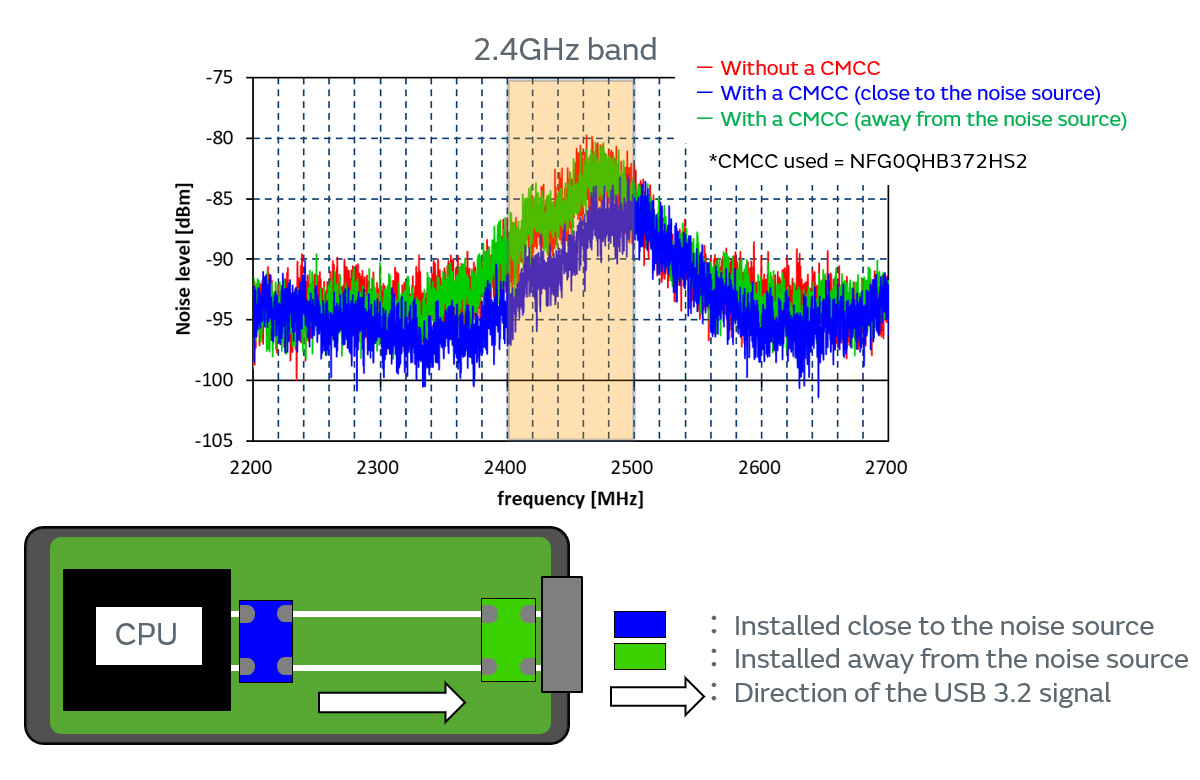
Wi-Fi reception sensitivity was evaluated by using an electronic device with USB 3.2 support and equipped with a Wi-Fi antenna.
During communication through USB 3.2, Wi-Fi communication was performed between the electronic device and the Wi-Fi test set. During the Wi-Fi communication, we confirmed whether the receiving sensitivity would deteriorate in a case where the USB 3.2 communication was not performed. Furthermore, the effects of this measure were compared with those derived from CMCC.
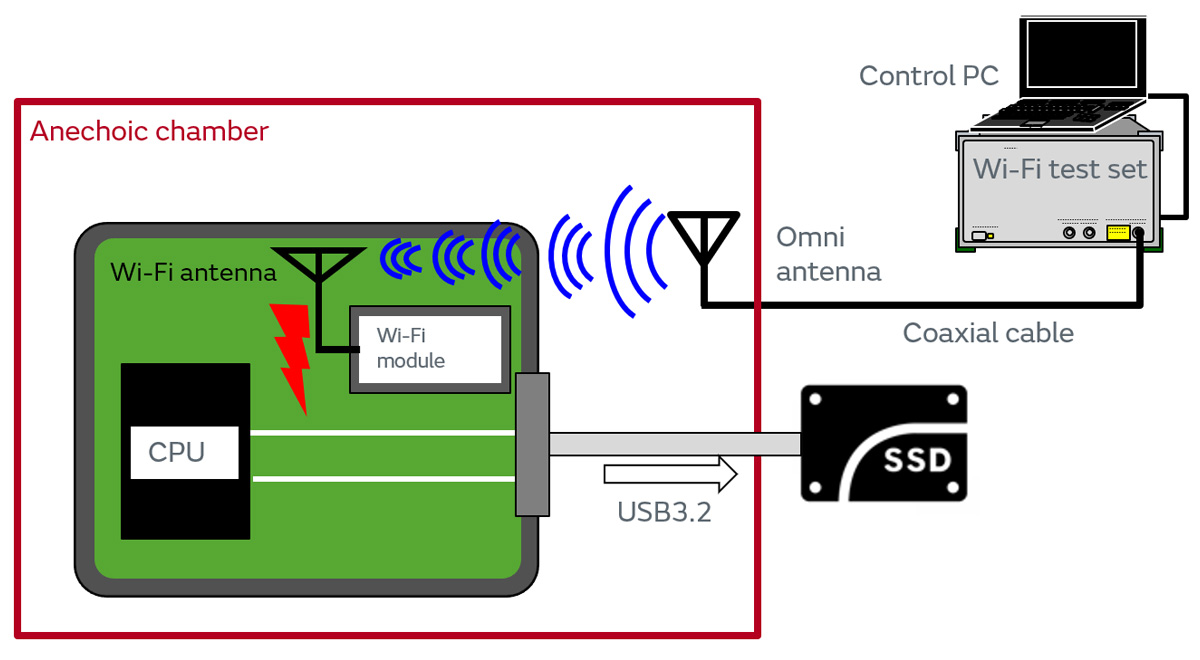
Green vs. red (standard)
When a CMCC was placed away from the noise source, reception sensitivity was improved by approximately 1dB.
Blue vs. red (standard)
When a CMCC was placed close to the noise source, reception sensitivity was improved by approximately 8dB.
As a result, Wi-Fi reception sensitivity in the actual device differed by 7dB depending on where the CMCC was set up.
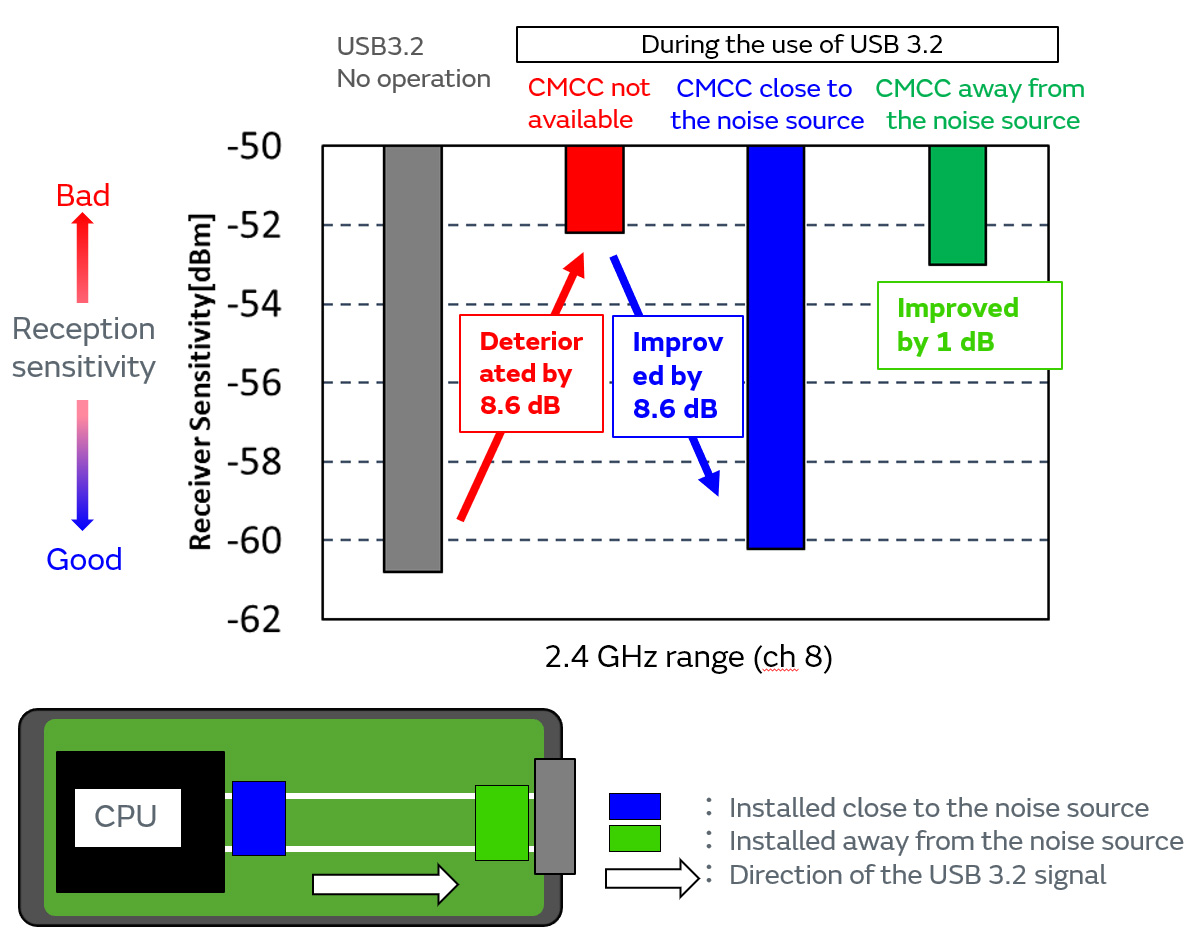
In a USB 3.2 compliance test, we confirmed whether the insertion of a CMCC affects a signal waveform. In the test, eye patterns were evaluated in an environment for testing the compliance of the waveform of USB 3.2.
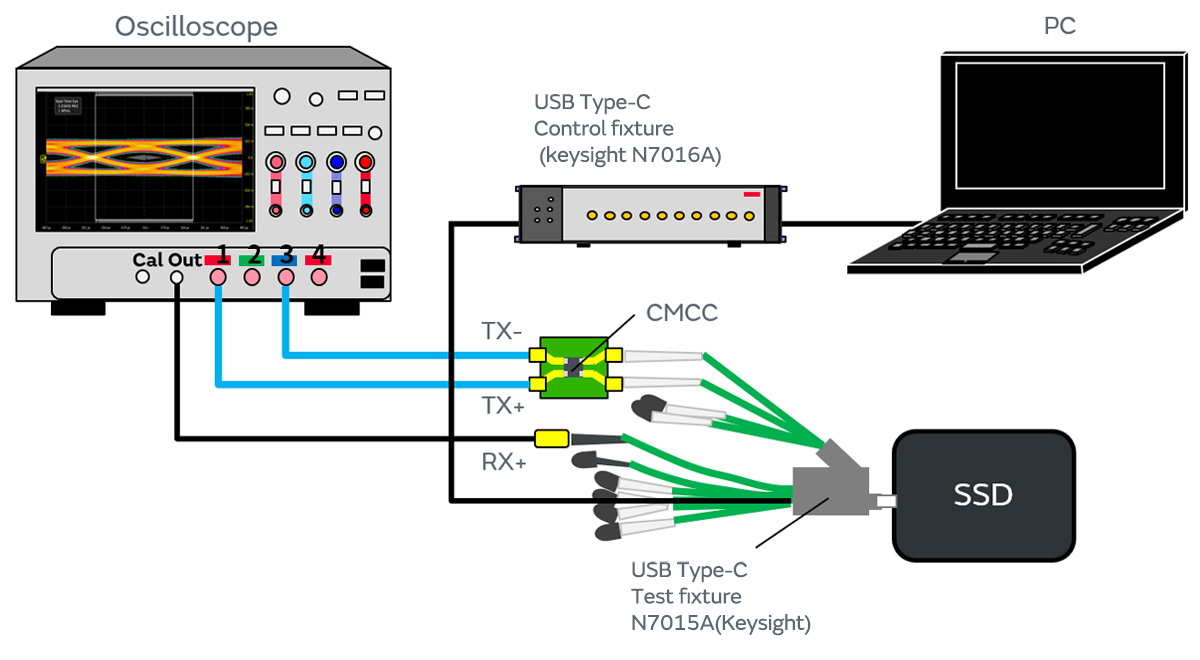
In the eyemask tests for Keysight SDA and USB-IF, it was found that even the use of a common mode choke coil, NFG0QHB372, did not have any adverse effect on the waveform.
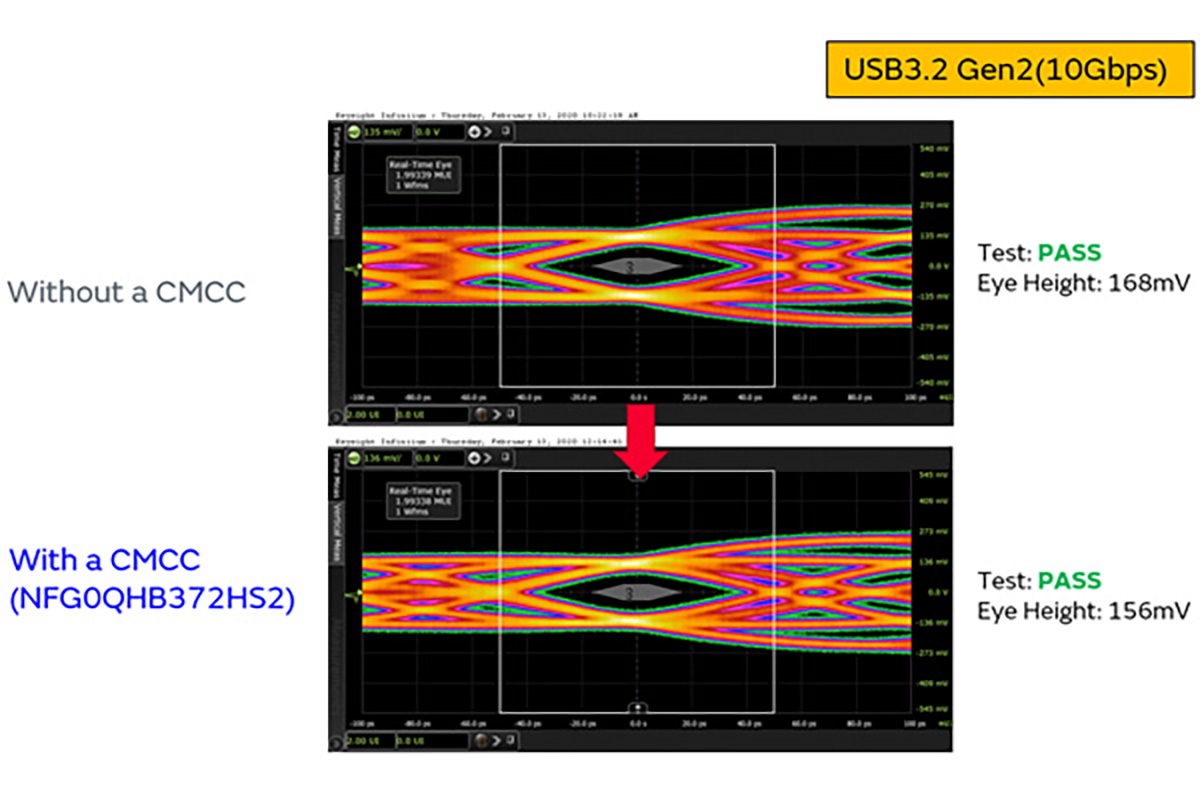
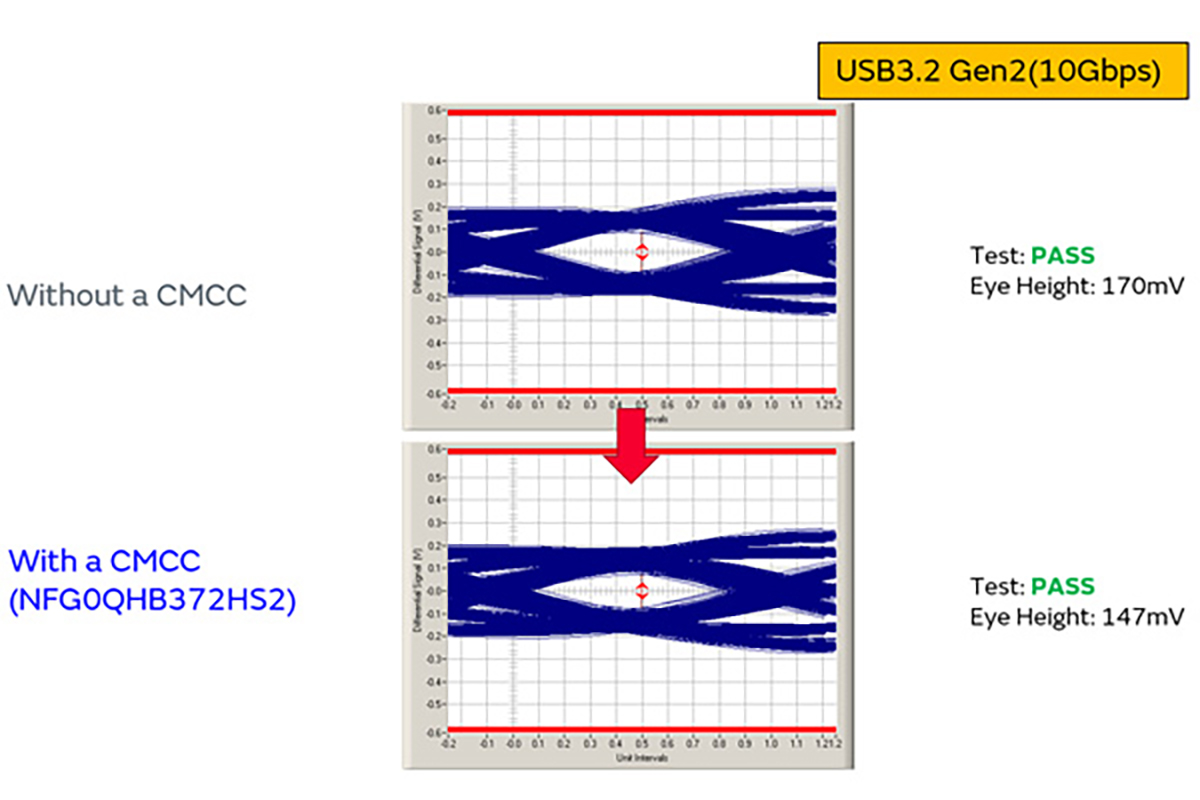
The evaluation and investigation show that the position to install a CMCC is important for noise suppression measures for the intrasystem EMC.
The following CMCCs are recommended for noise suppression in differential transmission lines.
Due to this function, common mode noise can be effectively eliminated without affecting the signal waveform. Furthermore, the measure has been recommended by several IC makers.


